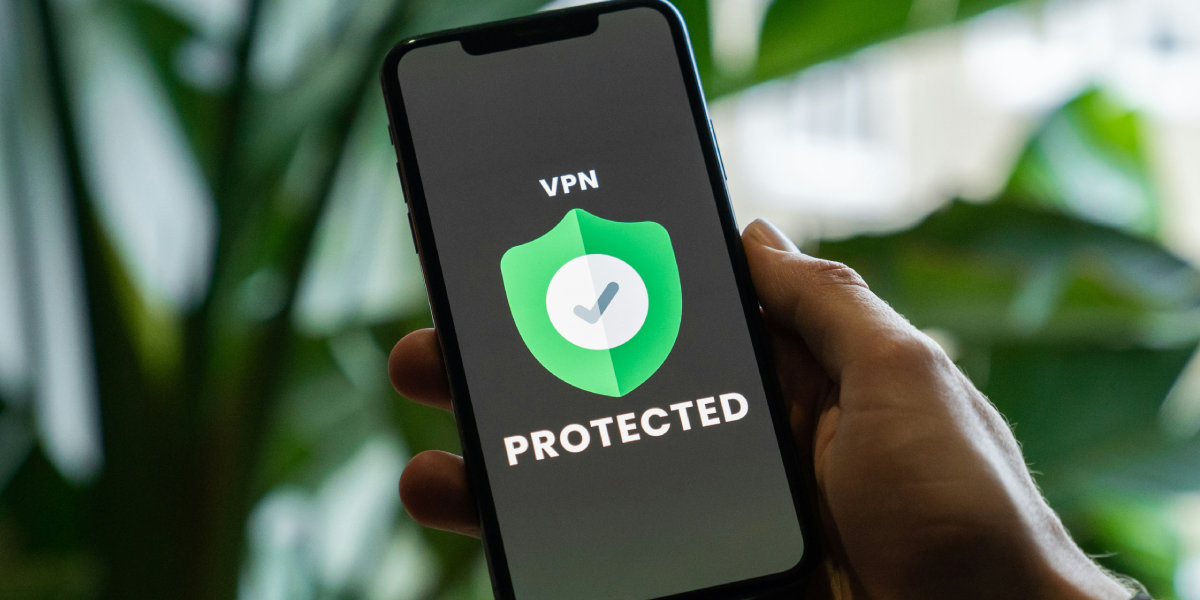Tech
The Importance of User-Centered Design in Control Panel Design
Published
4 weeks agoon
By
admin
Have you ever used a gadget and found it frustratingly hard to control? That’s often a sign of poor control panel design. Good design makes devices easier and more enjoyable to use.
It’s all about making things work well for the people using them, not just looking cool. In this article, we’ll explore why focusing on the user is key in control panel design. It can make the difference between a product we love to use and one we wish we’d never bought.
Join us as we dive into the importance of user-centered design.
Enhanced User Experience
A big part of creating control screens is making the user experience better. It means knowing what the end users want and need and giving it to them. This method makes sure that the end product works well and is easy to use.
By putting user experience first when designing control panels, companies can make new products much easier to learn how to use. This makes users happier because they can use the product effectively without having to deal with extraneous problems.
Reduced Errors and Accidents
When building control panels, the most important thing is to make mistakes and crashes as unlikely as possible. As the name suggests, this part of the design is all about making systems that keep people from making mistakes that could cause problems or even crashes. Putting in place safety features, sensible control layouts, and clear signs are all important ways to reach this goal.
Safety features, like emergency stop buttons and warning lights, are very important when designing a control panel. These features make sure that users can act quickly in unexpected scenarios, which lowers the chance of damage or crashes.
Increased Productivity and Efficiency
Increasing productivity and efficiency is a significant advantage of well-designed control panels. This is achieved by streamlining the interface, making it easy for users to access and use the controls they need without unnecessary delay. Simplifying operations allows users to complete tasks more quickly and with less effort.
If you find that your current control panel is hindering productivity rather than enhancing it, consider control panel engineering services to optimize your system for better performance.
Improved Learnability
Improving learnability is an important part of making control screens that are easy for people to use. It makes sure that new users can quickly figure out how to use the device without having to read a lot of instructions or watch a lot of videos. It takes less time and effort for users to understand and use tools that are well-designed, which improves the entire user experience.
Organizing controls in a way that makes sense and is constant, along with giving clear and concise directions, is part of designing for better learnability. This method helps people guess and remember how to use the industrial control panel, which makes the gadget easier for more people to use.
Empower Your Operations With Intuitive Control Panel Design
In the end, control panel design is more than just arranging buttons and displays. It’s about understanding and meeting the needs of those who use it every day. By focusing on making devices easy and safe to use, we can make our work and personal lives a bit smoother.
Remember, good designs fit into our lives effortlessly. Thinking about how real people will use a product leads to great electrical control panel design that stands the test of time.
Did you find the information in this article helpful? If so, be sure to check out our blog for more valuable resources.
You may like
Tech
What Is A HIPAA Compliant Fax And Why Does It Matter In Healthcare?
Published
5 days agoon
April 24, 2024By
admin
Each year, millions of people are affected by healthcare data breaches, emphasizing the vital importance of secure data practices. In healthcare communication, common issues like data breaches, inefficiency, and severe legal repercussions often arise from non-compliance with regulations.
Fortunately, understanding and implementing HIPAA-compliant fax solutions can address these pressing challenges. These systems enhance security, streamline communication, and minimize legal risks.
By adopting HIPAA-compliant faxing, healthcare providers not only comply with regulations but also significantly improve patient care. This approach ensures that patient information is handled with the utmost care and confidentiality, leading to a more trustworthy healthcare system.
What Is HIPAA Compliance
HIPAA compliance is vital in safeguarding patient data in the healthcare industry, setting the stage for secure and ethical management of sensitive information.
- Definition of HIPAA: The Health Insurance Portability and Accountability Act, known as HIPAA, sets stringent standards for protecting sensitive patient information. Any entity that handles protected health information must implement and adhere to comprehensive physical, network, and process security measures to safeguard this data.
- Importance of compliance: Adhering to HIPAA regulations is essential not only to comply with the law but also to uphold ethical standards in healthcare. Compliance prevents unauthorized access and breaches of patient data, which could lead to severe legal consequences and erode trust in healthcare providers. By following HIPAA guidelines, healthcare organizations ensure the confidentiality and security of patient information, thereby maintaining trust and integrity in their operations.
Ensuring HIPAA compliance isn’t just a legal obligation but a critical component of patient trust and safety in healthcare, making it a fundamental practice for all providers.
Understanding HIPAA Compliant Fax
HIPAA-compliant fax solutions are designed to meet strict privacy regulations, ensuring the secure transmission of medical information.
- Definition: You might be asking, “What Is HIPAA Compliant Fax?” A HIPAA compliant fax solution adheres to standards set by HIPAA for protecting patient information. It ensures that data sent over fax cannot be intercepted or accessed improperly.
- Key Features of HIPAA Compliant Fax Solutions: These include encryption during transmission, secure data storage, and controlled access to information. Each feature plays a crucial role in maintaining the confidentiality and integrity of patient data.
- Difference from Standard Faxing: Unlike traditional faxing, HIPAA compliant faxing uses advanced security measures to prevent unauthorized access and data breaches, aligning with legal health information protection standards.
Adopting HIPAA fax is crucial for healthcare providers aiming to enhance data security and meet regulatory requirements efficiently.
Benefits Of Using HIPAA Compliant Fax
Utilizing HIPAA compliant fax technology offers significant advantages, enhancing overall healthcare communication and security.
- Enhancing data security: HIPAA compliant faxing strengthens the security of sensitive patient information. With robust encryption and strict access controls, it ensures that patient data remains confidential and secure during transmission.
- Improving efficiency in healthcare communication: These solutions streamline communication processes by reducing the time and effort needed to ensure compliance manually. Automated features enable quick and secure data sharing among healthcare providers.
- Reducing legal risks: Compliance with HIPAA reduces the risk of legal issues and hefty fines associated with data breaches. By using HIPAA compliant faxing, healthcare organizations can avoid penalties and maintain their reputations.
The benefits of HIPAA compliant faxing are clear, providing enhanced security, improved efficiency, and reduced legal risks, making it an essential component of modern healthcare operations.

Implementing HIPAA Compliant Fax In Healthcare
Implementing a HIPAA compliant fax system is a crucial step towards enhancing data security and compliance within healthcare operations.
- Steps to implement a compliant system: First, choose a fax solution that fully complies with HIPAA requirements, focusing on encryption, secure data transmission, and access control features. Next, integrate this system into your existing healthcare information infrastructure. Ensure it aligns seamlessly with other communication tools and patient management systems for optimal functionality. This step involves both hardware setup and software configuration to ensure all components communicate securely.
- Training staff for compliance: Essential to successful implementation is comprehensive staff training. Healthcare professionals must be well-versed in operating the new system and understanding HIPAA regulations related to faxing. Training should cover secure handling of patient information, recognizing phishing attempts, and maintaining logs for access and transmission. Regular refresher courses should be scheduled to keep staff updated on new compliance standards and technology updates.
Properly implementing and training staff on HIPAA compliant fax systems are pivotal steps that ensure the security and efficiency of healthcare communications, reinforcing patient trust and legal compliance.
Conclusion
HIPAA-compliant faxing plays a pivotal role in securing patient data and enhancing the efficiency of healthcare operations. It not only safeguards sensitive information but also ensures that healthcare providers remain compliant with legal standards.
Healthcare providers should critically assess their current fax solutions and consider the benefits of switching to HIPAA-compliant options. This move is crucial for maintaining the integrity and security of patient communications.
Look towards the future of digital communication by exploring more advanced, secure technologies as they evolve. Additionally, conduct regular reviews and updates of compliance practices to stay aligned with changing regulations and technological advancements.
Tech
The Evolution of Mobile Technology: Past, Present, and Future
Published
3 weeks agoon
April 10, 2024By
admin
Mobile technology has revolutionized the way we live, work, and communicate. From its humble beginnings as bulky devices used solely for making calls, to the sleek, multifunctional smartphones of today, mobile technology has undergone a remarkable evolution. In this article, we will delve into the past, present, and future of mobile technology, exploring its transformation, the key milestones along the way, and what the future holds for this ever-evolving field.
The Past: Early Beginnings of Mobile Technology
The journey of mobile technology began long before the advent of smartphones. In the early 20th century, mobile communication was limited to two-way radios used primarily by the military and certain industries. However, the concept of handheld mobile devices accessible to the general public emerged in the latter half of the century.
One of the earliest commercially available mobile phones was the Motorola DynaTAC 8000X, introduced in 1983. Weighing nearly 2 pounds and sporting a hefty price tag, this device was far from the sleek smartphones we know today. Despite its limitations, the DynaTAC paved the way for future advancements in mobile technology and marked the beginning of the mobile revolution.
Throughout the 1990s, mobile phones evolved rapidly, with improvements in size, weight, and functionality. The introduction of digital networks such as GSM (Global System for Mobile Communications) enabled clearer voice calls and paved the way for the development of text messaging, a feature that would become ubiquitous in the years to come.
The Present: The Era of Smartphones
The 21st century brought about a paradigm shift in mobile technology with the introduction of smartphones. These devices combined the functionalities of a mobile phone with those of a personal digital assistant (PDA), allowing users to perform a myriad of tasks beyond making calls and sending texts.
One of the most significant milestones in the era of smartphones was the launch of the iPhone by Apple Inc. in 2007. With its intuitive touchscreen interface, robust app ecosystem, and sleek design, the iPhone revolutionized the mobile industry and set the standard for modern smartphones. Following the success of the iPhone, competitors such as Samsung, HTC, and Google entered the market with their own offerings, further driving innovation and competition.
Today, smartphones have become an indispensable part of daily life for billions of people around the world. From communication and entertainment to productivity and commerce, smartphones empower users to stay connected and informed wherever they go. The integration of advanced technologies such as artificial intelligence (AI), augmented reality (AR), and biometric authentication has further expanded the capabilities of smartphones, making them more versatile than ever before.
Furthermore, the proliferation of high-speed mobile networks such as 4G LTE and the impending rollout of 5G technology have transformed the way we access and share data on our mobile devices. With faster download speeds and lower latency, 5G promises to unlock new possibilities in areas such as virtual reality (VR), autonomous vehicles, and the Internet of Things (IoT).
The Future: Innovations on the Horizon
As we look ahead, the future of mobile technology appears boundless, with continued advancements poised to reshape our world in profound ways. One of the most anticipated developments is the widespread adoption of 5G technology, which promises to deliver unprecedented speed, reliability, and connectivity. With 5G networks, users can expect smoother streaming, faster downloads, and seamless connectivity across a wide range of devices.
In addition to 5G, other emerging technologies are poised to drive innovation in the mobile space. One such technology is foldable displays, which enable smartphones to transform into larger screens for enhanced productivity and multimedia experiences. While still in the early stages of development, foldable phones have the potential to revolutionize the form factor of mobile devices and open up new possibilities for design and functionality.
Another area of focus is artificial intelligence (AI) and machine learning, which are being integrated into smartphones to enhance user experiences and enable new capabilities. From voice assistants and predictive text to image recognition and personalized recommendations, AI is powering a new generation of intelligent mobile devices that adapt to users’ needs and preferences.
Furthermore, advancements in biometric authentication, such as facial recognition and fingerprint scanning, are making smartphones more secure and convenient than ever before. Gone are the days of cumbersome passwords and PINs – with biometrics, users can unlock their devices and authenticate transactions with a simple glance or touch.
Beyond hardware and software innovations, the future of mobile technology will also be shaped by societal trends and cultural shifts. As the world becomes increasingly interconnected, mobile devices will play a central role in bridging the digital divide and empowering underserved communities with access to information and resources. From healthcare and education to finance and agriculture, mobile technology has the potential to drive positive change and improve lives on a global scale.
Conclusion
The evolution of mobile technology has been nothing short of extraordinary, from the bulky handsets of the past to the sleek, multifunctional smartphones of today. With each advancement, mobile devices have become more powerful, more versatile, and more indispensable to our daily lives. Looking ahead, the future of mobile technology holds immense promise, with innovations such as 5G, foldable displays, and artificial intelligence poised to transform the way we live, work, and communicate. As we embark on this exciting journey of discovery and innovation, one thing is certain: the mobile revolution is far from over, and the best is yet to come.
Mobile
Mobile Security: How to Keep Your Devices Safe from Cyber Threats
Published
3 weeks agoon
April 10, 2024By
admin
In today’s digital age, our smartphones have become an integral part of our daily lives. From communication to banking, we rely on these devices for almost everything. However, with this increased dependency comes a heightened risk of cyber threats. Mobile devices are vulnerable to various security risks, including malware, phishing attacks, data breaches, and more. Therefore, it’s crucial to take proactive steps to safeguard our devices and personal information. In this comprehensive guide, we’ll explore the importance of mobile security and provide practical tips on how to keep your devices safe from cyber threats.
Understanding the Threat
Before diving into the measures to enhance mobile security, it’s essential to understand the prevalent threats facing mobile users today:
- Malware: Malicious software designed to disrupt, damage, or gain unauthorized access to mobile devices. Malware can come in various forms, including viruses, worms, Trojans, and ransomware.
- Phishing Attacks: Cybercriminals use deceptive emails, text messages, or fake websites to trick users into revealing sensitive information such as passwords, credit card numbers, or personal details.
- Unsecured Wi-Fi Networks: Connecting to public Wi-Fi networks exposes your device to potential security risks as hackers can intercept data transmitted over these networks.
- Outdated Software: Failure to update your device’s operating system and apps leaves it vulnerable to known security vulnerabilities that cybercriminals can exploit.
- Lost or Stolen Devices: Physical loss or theft of mobile devices can result in unauthorized access to sensitive information stored on the device.
Tips for Enhancing Mobile Security
Now that we’ve identified the primary threats, let’s explore actionable steps to mitigate these risks and enhance mobile security:
- Use Strong Authentication Methods: Enable biometric authentication (such as fingerprint or facial recognition) or use complex passwords/pin codes to secure access to your device. Avoid using easily guessable passwords and never share them with anyone.
- Install Security Software: Invest in reputable mobile security apps that offer features such as malware scanning, anti-theft protection, and safe browsing. These apps can help detect and remove malicious software from your device.
- Update Regularly: Keep your device’s operating system, apps, and security software up to date. Manufacturers regularly release updates that include patches for known security vulnerabilities, so it’s crucial to install these updates promptly.
- Exercise Caution with Apps: Only download apps from official app stores such as the Apple App Store or Google Play Store. Avoid sideloading apps from third-party sources, as they may contain malware or other security threats.
- Enable Remote Wipe and Find My Device: Activate built-in features like “Find My iPhone” (iOS) or “Find My Device” (Android) that allow you to remotely locate, lock, or erase your device in case it’s lost or stolen.
- Encrypt Data: Enable encryption on your device to protect your data from unauthorized access. Most modern smartphones offer built-in encryption features that you can activate in the device settings.
- Be Wary of Public Wi-Fi: Avoid connecting to public Wi-Fi networks for sensitive activities such as online banking or shopping. If you must use public Wi-Fi, consider using a virtual private network (VPN) to encrypt your internet connection and protect your data.
- Practice Safe Browsing Habits: Exercise caution when clicking on links or downloading attachments from unknown sources, as they may lead to phishing websites or malware downloads. Always verify the authenticity of websites before entering sensitive information.
- Backup Data Regularly: Regularly back up your device’s data to a secure cloud storage service or an external hard drive. In the event of a malware infection or device loss, you can restore your data from the backup without losing valuable information.
- Educate Yourself: Stay informed about the latest mobile security threats and best practices for staying safe online. Attend workshops, read articles, and follow reputable cybersecurity blogs to keep abreast of emerging trends and techniques used by cybercriminals.
Conclusion
As mobile devices continue to play an increasingly central role in our lives, ensuring their security is paramount. By following the tips outlined in this guide, you can significantly reduce the risk of falling victim to cyber threats such as malware, phishing attacks, and data breaches. Remember that mobile security is an ongoing process that requires vigilance and proactive measures. By staying informed, exercising caution, and implementing robust security practices, you can keep your devices safe from cyber threats and enjoy a worry-free mobile experience.

What Is A HIPAA Compliant Fax And Why Does It Matter In Healthcare?

The Key Elements to Consider When Choosing a Web Development Outsourcing Partner

Custom Vehicle Wraps: A Cost-Effective and Attention-Grabbing Marketing Tool

The Ultimate Guide to Choosing the Right Social Media Marketing Agency for Small Business

Choosing the Right SEO Outsourcing Agency: A Complete Guide

Essential Tips for Smooth Car Rental Reservations Online

Best Netflix Games To Chill With

The Evolution of Mobile Technology: Past, Present, and Future

Mobile Security: How to Keep Your Devices Safe from Cyber Threats

Understanding EV Mode in a Car: Exploring the Future of Electric Vehicle Technology
Trending
-

 Gaming3 years ago
Gaming3 years agoIs Conan Exiles Cross Platform? Check Out The Facts Here – 2021
-

 Miscellaneous1 year ago
Miscellaneous1 year agoSubnautica Below Zero Map – Know About Complete World Map and Coordinates 2021
-

 Mobile1 year ago
Mobile1 year agoVivo Company Belongs to Which Country? Vivo Made in Which Country? Is Vivo Chinese Company?
-

 Gaming3 years ago
Gaming3 years agoIoT and Gaming – A World of Unlimited Possibilities!

